
‘Against a white background, in a red worker dress and charcoal gray newsboy screwed to her head, she stares at the camera and raises her fist, pouting, ready to follow the march of the revolution alongside her Maoist comrades (Anne Wiazemsky and Jean-Pierre Léaud ). This severe, constricted image, taken from La Chinoise (1967) by Jean-Luc Godard, could not be further from the roles in which we will see Juliet Berto later – yet it is one of those through which she is best known. After meeting with the Franco-Swiss filmmaker, at the end of a projection of Carabiniers (1963) Godard will hire her in particular for Week-end (1967) and Le Gai savoir (1969).
‘What links this young worker to the provocative and whimsical Céline of Céline and Julie Go Boating by Jacques Rivette (1974), or to the passionate and empathetic barmaid crossing the night in Montmartre alongside drug dealers, heroin addicts, of a grumpy Hungarian boxer (Jean-François Stévenin) and a generous West Indian pastor (Robert Liensol) in Neige? A face, appeared in about fifty films, but not much more. The films of Godard having been screened in major festivals, Juliet Berto could have embarked on more lucrative projects, less jaw-dropping. But, very early in her career, she showed that she was not made for that.
‘What she liked was for the outside to hit the inside, for the off-screen to extend the frame. On the phone, Patrick Chesnais remembers the filming of Neige, in which he plays the role of a cop: “I had to defraud and shoot in the back of a young drug dealer. I had said to Juliet “Mostly, no sound of bullets” – they were blank, of course. I found it very risky in the neighborhood at night. The camera was far away, we were filming in long focal length, we didn’t have a projector. Juliet insisted that we hear the sound of bullets. And there people thought I was a killer. They would run, throw themselves on the ground, it was impressive. Juliet was looking for those risks.”
‘Distributor Jane Roger, daughter of director and cinema teacher Jean-Henri Roger (collaborator and companion, for several years, of Juliet Berto), must have been 7 or 8 years old on the Marseille set of Cap Canaille (the second film co-directed by Berto and Roger, released in 1983). She remembers passers-by dumbfounded in front of Patrick Chesnais (who this time played a mobster) coming out of a bank, pistol in hand. “Juliet and Jean-Henri wanted there to be no border between fact and fiction. I have the image of a very energetic shoot, with a lot of love, tears, laughter and noise.”
‘For Neige, Berto absolutely wanted people from the neighborhood to appear in the film. In 2013, at Le Louxor cinema in Barbès, during the inauguration of a room dedicated to the duo, an unrestored copy of the film was shown. Jane Roger remembers many spectators who came to see her to tell her that their grandfather or their cousin appeared in the film. Always in search of a collective synergy, Juliet Berto carried within her an ideal of communion.
‘In the documentary Juliet Berto, where are you? (2012) by Jean-Claude Chuzeville and Sophie Plasse, Stévenin says he went from assistant director to actor thanks to her. It was decided quickly on the set of Out 1. Noli mi tangere (1971) by Jacques Rivette, who was looking for an actor to play a thug [he had previously appeared in La Chamade by Alain Cavalier and L’Enfant sauvage by Truffaut , editor’s note]. Juliet Berto suggested to her the one she nicknamed Marlon (because she thought he looked like Marlon Brando). Attracted by new authors, she joined the castings of promising young filmmakers (Comrades by Marin Karmitz (1970) – founder of the company mk2 – or Un amour à Paris by Merzak Allouache, selected for the Perspectives du cinema français in Cannes in 1987).
‘In videos shot in a collective room and shown in the document, we hear her say, in her clear and cheeky voice: “Me, I’m against closed houses, I’m for the tribes. “She was not from Paris but she had this titi side, Poulbot, clever and human”, summarizes Chuzeville. As an actress, it was with Rivette that she found the abolition of the hierarchies she sought – she becomes his co-writer with full involvement. They will combine their magical powers several times, Céline and Julie go boating perhaps marking the peak of their common expression. In each scene, Berto invests herself physically in her head-in-the-air, nervous, elusive character – and on closer inspection, it is perhaps this role that best conveys the nature of this sensitive and imaginative artist. .
‘Discreet and modest, Juliet Berto – who will disappear from breast cancer at the age of 42 – has rarely given up on her private life. But, in her way of playing, we notice her tendency to push back a rebellious lock, to hold her chin by a tense index finger. Lively gestures which are the visible sign of a rich inner world, to which her texts, numerous and scattered, give us partial access. At the top of the pile, The Girl with Clay Heels, the only book she published in 1982.
‘Over the course of a fragmented writing, marked by the use of the pronoun “she” to speak of her, the same desire to escape transcends her words, coming from childhood, a territory of intimate suffering as much as a motor. “She’s elsewhere… At school and at boarding school, she was told ‘Jamet [her maiden name, editor’s note], get off the moon”… Yet here on the Barbès side, the colorful and warm crowd… She doesn’t just walk down a few streets and she’s on the sidewalk mingling with everyone… ” All in motion, Berto escapes all fixation, definition, label – she hated being stamped “Nouvelle Vague” or “feminist ” (although it was natural). And that’s what makes her forever so fascinating.’ — Josephine Leroy
___
Stills
___
Further
Juliet Berto @ IMDb
Juliet Berto page @ Facebook
In the Moment: Juliet Berto in Duelle (1976)
Juliet Berto : une force vive et incorruptible
Portrait chinois d’une Chinoise, paraît-il mangeuse de frites
Juliet Berto, figure secrète et rêveuse du cinéma français
Juliet Berto @ senscritique
Juliet Berto @ MUBI
Juliet Berto @ letterboxd
Juliet Berto, Actress, 42
[JULIET BERTO] Fume, c’est du Rivette!
HBD, Juliet Berto!
___
Extras
Juliet Berto (1984) by Gérard Courant – Cinématon
Juliet Berto et Bertrand Van Effenterre – Erica Minor (1974)
Juliet BERTO tourne au Havre
hommage a Juliet Berto (1947/1990)
__________
Jacques Rivette interviewed about Celine and Julie Go Boating
by Jonathan Rosenbaum, Lauren Sedofsky, and Gilbert Adair

JONATHAN ROSENBAUM: How was Céline et Julie vont en Bateau prepared? What was the initial motive?
JACQUES RIVETTE: Simply the desire to make a film. To get out of the dumps that we all felt we were in, make a film for as little money as possible, and, we hoped, amuse people. Because the adventure of Out didn’t turn out very well, from the point of view of public reception—there was no reception. It was almost impossible to show the film. Meanwhile, there had been another project [PHÉNIX] which we couldn’t do because it was too expensive, which Juliet Berto was also involved in. When we realized about a year ago that we couldn’t bring this project to fruition, I spoke to Juliet one evening and we decided to do something else. Something which would be on the contrary very cheap, as easy to make as possible, and fun to do. The first idea was to bring together Juliet and Dominique, who were already friends: I’d often seen them together.
ROSENBAUM: There seems to be a Hollywood aspect to Céline et Julie that’s quite different from your earlier films.
RIVETTE: Yes—but Hollywood twenty years ago, certainly not today. We thought of it in reference to certain things, such as everything concerning the house. Contrary to what some critics at Cannes thought, our ambitions weren’t along the lines of parody, but rather a pastiche of an old-fashioned sort of cinema. For instance, the use of wide angles and deep focus. I thought during the shooting that the film was a little bit like an RKO movie of the ’50s, but in color—those films that more or less successfully imitated Wyler’s. There was a fad between 1945 and 1950 to use mise en scène in depth, particularly at RKO—the Gregg Toland influence. In the film’s details, we thought of several American movies. At the end, for example, the idea was to have a slapstick finish. In fact we were thinking a bit of Hawks, although we did it quite differently from the way Hawks would have. One of Hawks’ favorite remarks is that when he’s found a subject, he first of all tries to make a comedy out of it; then, if he doesn’t succeed, it’s a serious film. So we decided that the end would be completely open; it could be very dramatic or whatever we wanted. I wanted to have a slapstick finale because it seemed more amusing.
There are several scenes in the film which I had to edit a lot because they played on looks and reactions— I had to do much more editing than in L’Amour Fou or Out. And from the moment you start editing, you’re obliged to think about what Hitchcock would have done in similar circumstances. But it’s only in three or four sequences that we frankly attempted to follow the principles of Hitchcockian editing. For the first 15 minutes, we wanted to have the imaginary Montmartre of a studio, like the Montmartre of An American in Paris—which is why we used the second title, Phantom Ladies Over Paris, which is also the title of the interior film, if you like.
ROSENBAUM: Were cartoons an influence?
RIVETTE: Oh, yes. Definitely. But it was important as an idea only at the beginning. If we’d had more time and money we would have pursued it more systematically. Although it might not have changed anything. And the actresses had this in mind all the time, especially Juliet. Everything she does is always very visual, physical. Her movements are very staccato—the way she walks, the way she eats the candy.
GILBERT ADAIR: And Feuillade?
RIVETTE: Not at all. I don’t find the film very Feuillade-like. The scene with the girls in black tights was just a gag, lasting only 30 seconds.
ADAIR: But the whole idea of fantasy in the open air…
RIVETTE: Yes, but that’s because we were broke. It wasn’t at all a theoretical position. When we were looking for the house, we wanted it to be very homey; in fact, it’s a completely normal house, but we filmed it in such a way that it seems a little unnatural. And we were lucky to find the cats there. We didn’t bring them. All the cats are in the film simply because they were there.
ROSENBAUM: When was script writing introduced into the project?
RIVETTE: There never really was a written script. What is a scenario, after all? If it’s a project for a film, or, on the contrary, something written and then shot, I don’t do that any longer—not since L’Amour Fou—and I have no desire to do it again.
We began by elimination: we didn’t want to make a serious film; we didn’t want to make a film about the theater because we’d done that too often; we didn’t want to make a film about current events or politics. But we did have the desire from the very beginning to do something close to comedy, and even frankly commedia dell’arte. And the first thing we did after two hours of conversation was to look for the characters’ names. And we stopped there that evening. So finding the names Céline and Julie was our starting point…
The first stage consisted of conversations with Juliet and Dominique, when quite quickly the two girls organized their own characters. Then came the idea of their meeting, how the two connected. But then there was a stage—after the first half hour of the film as it now stands—where we didn’t have a clear idea, where there were all kinds of possibilities. We hesitated for about two weeks with Eduardo [de Gregorio], who had joined us by that time. We already felt that a second story was necessary within the first, for which I wanted Bulle [Ogier] and Marie-France [Pisier], in order to have another feminine pair, both in opposition and in relation to the first. But we didn’t know at all either what the second story would be or the mechanism between the two—that’s what took the longest to organize. It was by approximation, groping. It was Eduardo who suggested the Henry James novel [The Other House] which we started from, which he hadn’t read himself but had heard about. In fact, none of us has read it because we couldn’t find it. Eduardo read only the dramatization, which is apparently very boring; and I don’t read English well enough.
We didn’t want this to be a realistic investigation—we sought a less realistic principle. We thought of lots of things, like Bioy Casares—Morel’s Invention. The day when we were really happy, when I felt we’d found the trigger, was the day we had the idea of the candy. Because that was what permitted us to bring everything together.
ROSENBAUM: When did you shoot the scenes in the house?
RIVETTE: In the middle of the shooting. At first we thought of doing it later, and then for all sorts of practical reasons—because both girls had to talk about the house in their scenes together—we had to shoot it earlier. On the whole, the shooting was in three parts: first we shot more or less everything corresponding to the first part of the film—all the exteriors (the chase, etc.) and the “annexes” (like the cabaret); then the scenes in the house; then everything taking place in Julie’s apartment.
ROSENBAUM: Why did you decide to use a scriptwriter and not depend completely on improvisation after the experience of Out?
RIVETTE: Out and Céline et Julie are related, but in the end quite different. In Out there was a canvas, but inside the canvas was raw improvisation. But even in this case I wasn’t alone: I did it with a friend who was also my assistant director, Suzanne Schiffman. I like having someone by my side, anyway, as a kind of referee, not an arbitrator but someone who has other ideas. So Eduardo was there almost from the start. But I didn’t ask him to come as a scriptwriter. I asked him just to come and talk with us on the same level, and he was present during all the shooting.
ADAIR: It wasn’t that you wanted someone to write the dialogue in the house?
RIVETTE: Not really. Maybe a little. When you’re having discussions like that, it’s always useful to have several people to toss out ideas. Eduardo had already worked with Suzanne Schiffman on the Phénix project, and we were used to discussing things together very informally. It wasn’t at all work. In fact, during the shooting, Eduardo wrote two scenes in their entirety; everything else was done with us. The scenes in the house had to be written; those between the two girls were largely written by the actresses themselves. Their dialogue wasn’t definitive, but a sort of canvas on which we improvised afterward. After all, there were many precise things that had to be said; it couldn’t be totally improvised. And there was a whole system of repetition in the house, so that had to be completely written. Marie-France, Bulle, Eduardo, and I wrote out the principal scenes. But Bulle’s monologue when she’s bleeding and the scene just after, between Marie-France and Barbet [Schroeder], were done only by Eduardo.
ADAIR: In Out there are explicit references to “The Hunting of the Snark,” and the whole of Céline et Julie is saturated with the spirit of Lewis Carroll. What role did Alice in Wonderland play in the conception of the latter film?
RIVETTE: We thought of it in the first scene. We wanted Juliet’s dash in front of Dominique on the park bench to remind one a bit of the White Rabbit. The idea was that Dominique would chase her and they would both fall, not into the rabbit hole, but into fiction.
SEDOFSKY: Can we say, perhaps, that the theme of the search in your earlier films has become, in Céline et Julie, a formal problem?
RIVETTE: It’s purely a question of film construction. Let me add that for me it’s the same in the other films. Because even in Paris Nous Appartient and Out (L’Amour Fou was an exception) we went through the same process: beginning with a certain number of characters, with certain relations between them, and then arriving at a stage in the preparation of the project where there was very little dramatic action. The characters have relations, they meet and so on, but they really belong to different worlds. And then there’s a stage—which was the same for Céline et Julie as for the others—which comes later, sometimes very late, that involves using a kind of fiction which I always see at first as a background and a mechanism, not the underlying motivation. Purely a narrative mechanism. It simply happened that when I wrote Paris this mechanism became too important: this fiction of the Organization, which was really there only to connect all the elements, became more important than I had planned.
In Out, I was already more careful, because the idea of the “thirteen” came rather late. For a long time we thought that the characters might never meet; perhaps there would be five or six completely different stories. We just didn’t know. Still, I had the idea that something should bring them together, and so it was Histoire des treize. But it was just a mechanism. In Paris and, even more, in Out, I don’t take the whole idea of the search for meaning seriously. It was a convenience to bring about the meetings, but it didn’t work with either film, because they were taken to be films about a search. I tried and failed to make people understand, as the film progressed, that this search led to nothing: at the end of Paris, we discover that the Organization doesn’t exist; and the more Out progresses, the more evident it becomes that this new organization of the thirteen which appeared to have been formed never really existed. There had only been a few vague conversations between completely idealistic characters without any real social or political roots. In each case there was a first part where we assembled a story of a search, and a second part where little by little we wiped it out.
For me, Céline et Julie is not very different, except insofar as the decision to make a comedy is more emphasized. To my mind, Out is also a kind of comedy. It’s less obvious in Spectre, because the condensation dramatizes it much more. And even the fact that we improvised led to an atmosphere of psychodrama, and was more likely to create a situation of aggression and violence. It’s very difficult to arrive at something more subtle. Because violence is the simplest way: this is what’s been happening in the theater for the past fifteen years. The easiest thing in the world is to roll on the ground.
So in Céline et Julie we made a great effort to control that, after the experience of Out, and remain as much as possible within a comic framework. Certain scenes between Dominique and Juliet became much more dramatic than we anticipated—which is just as well, because they were only moments. But there’s no more “truth” in this film than in the others. The only truth is that of the filmstock and the actors.
____________
16 of Juliet Berto’s 62 roles
______________
Jean-Luc Godard La Chinoise (1967)
‘La Chinoise is a pop-art masterpiece by Jean-Luc Godard that both channels and parodies the revolutionary energies of Paris in 1967. Disillusioned by their suburban lifestyles, a group of middle-class students, led by Guillaume (Jean-Pierre Léaud) and Véronique (Anne Wiazemsky), form a small Maoist cell and plan to change the world by any means necessary. After studying the growth of communism in China, the students decide they must use terrorism and violence to ignite their own revolution.’ — Kino Lorber
Trailer 1
Trailer 2
______________
Jean-Luc Godard Week-end (1967)
‘An unhappily married bourgeois couple, each with a plan to murder the other, sets out on a weekend road trip, only to have it interrupted by the apocalypse.’ — MUBI
Trailer
______________
Claude Miller Juliet dans Paris (1967)
‘A young student, alone in Paris, is engaged in strange and bloody experiences of which she is both the authorizer and the victim.’ — Lio
the entirety
____________
Serge Bard Destroy Yourselves (1968)
‘Détruisez-vous takes its title from an oft-repeated ’68 slogan (“Aidez-nous, détruisez-vous”) and its lead from Godard’s La Chinoise, Warhol’s Factory, and the French Revolution. A drop-out from Nanterre University, Serge Bard returned to the school to shoot his film in April ’68, just a month before the student protests erupted. Incidentally, Anne Wiazemsky, who stars in La Chinoise, was also a student at Nanterre at that time. Bard’s muse, the English fashion model Caroline de Bendern, plays a confused member of an agit-prop cell led by Alain Jouffroy, cast as a professor proselytizing revolution to a near empty classroom. Juliet Berto, who also appears in La Chinoise, is another member of the cadre but offers no sisterly love to de Bendern, who grows increasingly uncertain and fragile in light of all the militancy.’ — quinzaine-realisateurs
Excerpt
Excerpt
_______________
Jean-Luc Godard Le Gai Savoir (1969)
‘Le Gai savoir is a 1969 film by Jean-Luc Godard. The shooting started before the events of May 68 and was finished shortly afterwards. Coproduced by the O.R.T.F., the film was upon completion rejected by French national television, then released in the cinema where it was subsequently banned by the French government. The film is an adaptation of Emile, or On Education, Jean-Jacques Rousseau’s treatise on education, and its title is a reference to Nietzsche’s The Gay Science.‘ — Wikipedia
Excerpt
______________
Jean-Daniel Verhaeghe L’araignée d’eau (1971)
‘Bernard, an entomologist, moves to the country with his wife to write in peace and quiet. When he brings home a water spider their lives change irrevocably as the insect transforms into a beautiful young woman.’ — IMDb
Excerpt
_____________
Jacques Rivette Out 1 (1971)
‘Rivette often spoke in paradoxes about his creative, collaborative process. These paradoxes had a very similar shape – tracing a path from an original assumed openness to, ultimately, something more closed and finite. He started the making of Out 1 in 1970 with the idea of exploiting a wildly “heteroclite and heterogeneous” casting – an assortment of actors with completely different styles and methods of performance – but ended up realising that “this heterogeneity is much less flagrant than I’d originally planned”. Likewise, juggling various types of material from the troubled, stop-start shoot of Merry-Go-Round (Maria Schneider had abandoned the project mid-way, to be replaced, completely visibly, by Hermine Karagheuz), Rivette hoped to make it the avant-garde, meta-document of a film that “searches for itself three times, three times searches for a way out” – but, even here, the thread of a story ended up imposing itself and making everything more coherent and unified than he actually intended.
‘Many of Rivette’s actors, it would appear, absorbed this selfsame type of paradox. In a colourful career interview with Cinéma magazine in 1985, Juliet Berto (who died of cancer, tragically young, in 1990) looked back on her collaborations with the director and asserted that, while her initial intention was to defy and subvert this “old man” who had evidently cast her as a “Godardian actress” in Out 1, she eventually grasped that “the portrait was right-on, he had won”. Bulle Ogier has often testified that what at first seemed like very open, free and democratic processes of improvisation and collaboration on the sets of the films were often underpinned by Rivette’s stealthy manipulation of the psychologies and proclivities of all involved (and thus not so far removed, on this level, from a filmmaker such as Rainer Werner Fassbinder).’ — Adrian Martin
Trailer
____________
Jean-Luc Godard Schick After-Shave (1971)
‘During the height of his rabidly Marxist/Maoist cinematic phase (1968-1972), French film director Jean-Luc Godard formed the Dziga Vertov Group film collective with Jean-Pierre Gorin. The collective was fiercely anti-capitalist and anti-auteur, yet this didn’t stop them from producing television commercials for large multinational corporations or working for an advertising firm like Agency Dupuy-Compton (which became part of Saatchi & Saatchi in 1986). Amusingly, in this instance Godard and Gorin took money from arch-Republican conservative capitalist Patrick Frawley, who was kind of the Koch brother of his day. Godard and Gorin—who would collaborate on their anti-consumerist masterpiece Tout Va Bien the following year—spent Frawley’s Yankee money on a Schick aftershave commercial with a couple arguing loudly over a news broadcast about Palestine as “He” shaves. “She” is frequent Godard actress Juliet Berto. I’m not quite sure who “He” is.’ — Richard Metzger
the entirety
_______________
Jacques Rivette Celine and Julie Go Boating (1974)
‘Whiling away a summer in Paris, director Jacques Rivette, working in close collaboration with his stars and coconspirators Juliet Berto and Dominique Labourier, set out to rewrite the rules of cinema in the spirit of pure play—moviemaking as an anything-goes romp through the labyrinths of imagination. The result is one of the most exuberantly inventive and utterly enchanting films of the French New Wave, in which Julie (Labourier), a daydreaming librarian, meets Céline (Berto), an enigmatic magician, and together they become the heroines of a time-warping adventure involving a haunted house, psychotropic candy, and a murder-mystery melodrama. Incorporating allusions to everything from Lewis Carroll to Louis Feuillade, Céline and Julie Go Boating is both one of the all-time-great hangout comedies and a totally unique, enveloping cinematic dream space that delights in the endless pleasures and possibilities of stories.’ — Criterion Collection
Trailer 1
Trailer 2
_______________
Glauber Rocha Claro (1975)
‘In the words of the director, a movie about ‘the colonizers in the view of the colonized’, the movie presents a series of disconnected happenings throughout Europe and Brazil emphasizing the perception of human life as trance-like experiences and thus offering a view of the human history as a connection of symbolic behavior.’ — IMDb
Excerpt
______________
Joseph Losey Mr. Klein (1976)
‘Occupied Paris, 1942. Alain Delon’s Catholic Robert Klein seems to be sitting pretty, with attractive mistress Juliet Berto, and an apartment crammed full of expensive paintings, sculpture, tapestries – and mirrors – most of which he’s bought at fire sale prices from Jews eager to emigrate/flee. But then he finds a Jewish newspaper delivered to his doorstep, and the protests and desperate search for his Aryan heritage begins, so desperate that his attempts to establish his identity start to come second to a frenzied search for his doppelgänger, a search that comes to an unforeseen, but perhaps inevitable end.
‘An indictment of French complicity on the eve of the infamous Vélodrome d’Hiver roundup, with Claude Levy (one of the chief interviewees in Marcel Ophüls’ The Sorrow and the Pity) as historical consultant, MR. KLEIN was received coldly by French audiences, who objected to its depiction of wartime collaboration. Yet it still went on to represent France for the Cannes Film Festival Palme d’Or and would win three Césars (French Oscars) for Best Film, Director, and Production Design by the legendary Alexandre Trauner, whose remarkable credits include everything from Marcel Carné’s Children of Paradise and Jules Dassin’s Rififi to Orson Welles’ Othello and Billy Wilder’s The Apartment.’ — frenchculture.org
Trailer
______________
Jacques Rivette Duelle (1976)
‘Rivette counter-intuitively couches this florid fairy-tale material in a hard-bitten film-noir framework, going so far as to toss in explicit visual references to The Lady from Shanghai and The Big Sleep. There’s even a callback to Celine and Julie when trenchcoat-clad taxi dancer Elsa (Nicole Garcia) inexpertly trails Viva through the streets. Duelle achieves its most surreal and poetic effects through the cognitive dissonance of this sort of generic juxtaposition.
‘The strength of Berto’s performance comes from the intersection of this non-naturalistic line of acting with a silent-era quality she bears naturally: her photogénie. And in her case, the photogenic energy is even more original because it is freed from the male gaze of yesteryear. Berto attacks that dominance with a character that is distant, queer, and unpredictably powerful.’ — Film Comment
Trailer
Excerpt
______________
Luis Armando Roche El cine soy yo (1977)
‘After practicing various professions, Jacinto becomes a movie projectionist. This versatile man converts his truck into an audiovisual whale in order to show films on the street.’ — IMDb
the entirety
_____________
Pierre Zucca Roberte (1979)
‘Based on a novel by Pierre Klossowski and featuring a screenplay (as well as a short appearance) by Klossowski. In her 50s, Roberte is still an attractive woman who has kept her figure. She is married to Octave, a substantially older man. His twisted fantasies require that Roberte seek out other men while he follows behind and keeps track of her activities with them.’ — MUBI
the entirety
______________
Robert Kramer Guns (1980)
‘Following a series of films questioning commitment and politics in America and culminating with Milestones (1975), and a 1977 documentary on Lisbon’s Carnation Revolution, Scenes from the Class Struggle in Portugal, Robert Kramer moved to France with his family. The first film he made there was Guns, an intricate feature which echoed the paranoid films of 1970’s Hollywood. With Guns, Kramer continues his exploration of the militant psyche, while at the same time experimenting with different forms of narration.’ — Re:Voir
Trailer
_____________
Juliet Berto & Jean-Henri Roger Neige (1981)
‘An illustration of the more or less weird people in the nightlife of the revel region of a French town. In the center of the (almost non-existing) plot are barmaid Anita and a reverend. Anita cares for the Caribbean dealer Bobby like a mother, but he’s too cool to listen to her warnings. When he’s caught by the police, Anita has pity for her friends who are without “neige” (snow, probably cocaine) now, and tries to help them out.’ — Tom Zoerner
Trailer
*
p.s. Hey. ** Dominik, Hi!!! Ha ha, great description of your pained dog. It painted the world’s best thrift store painting in my imagination. Poor PE teacher, but I often wished my PE teachers seriously ill fates. Love turning the earth into a stack of pancakes and turning Budapest into a pad of melting butter (and giving you a helicopter just before that happens), G. ** David, Me too, obviously. I think Battersea is being turned into luxury condos or a mall + sports complex some other extremely boring shit. Lucky you. Mine bit the dust. It was probably shit, but still. 11 mile run, man. Serious. You’re gonna live for-almost-ever, I reckon. ** Shane, He didn’t, as far as I know. ** Maria, Isabella, Camila, Malaria, Gabriela, Hi. Whores are usually a good bet. I think I was too adult by the time Marilyn Manson came along. He just seemed like a novelty act. But I know he was an entrance to finding much better stuff for a lot of kids, so that warrants him, I suppose. ** Misanthrope, Good, I’m happy to feed your need. ‘Cargo 200’ sounds kind of standard fare? Maybe it’s has good style or something. Great luck getting through the swamp of must-dos, man. You’re a trooper. ** David Ehrenstein, I’m interested in Magick as font for sometimes pretty great art by believers. And I was quite interested in Chaos Malick when I was writing my novel ‘Guide’ to the point that it’s a sigil. But it’s true I’d rather go to the Magic Castle than a ritual. ** _Black_Acrylic, Ooh, it really would, wouldn’t it. I’m surprised no artist has used that gig of making a big temporary piece in that big main hall to build a roller coaster. Maybe I should propose that? Happy birthday to your dad a little late. I’m glad there’s a doctor looking after him, and I hope he’s more at peace today. Love, me. ** Jeff J, Hi. I think it’s safe to say that there is no city, town, hamlet, etc. on earth that would not be improved by a roller coaster. Or at least a day ride. I did a Pedro Costa post here a couple of years ago, yes. Ah, I see, it’s to be a studio visit kind of thing. Obviously, I hope that curator gets excited by it. The short fiction collection would be new or at least newer things, yes. I pretty much emptied my storage for ‘Ugly Man’. There are a few older things that I never finished that I’m thinking of going back to and working on to see if I can shape them into something. And there was a lot of material I wrote for ‘I Wished’ that I didn’t end up using that could possibly be salvaged and transformed maybe. Happy you’re starting up the fiction again, and I trust the slow start is just what that work needs to turn over like an engine. ** Okay. Today the blog focuses on the work of the wonderful French actor Juliet Berto, muse of both Godard and Rivette among others. She’s terrific, as I hope you’ll find out. See you tomorrow.
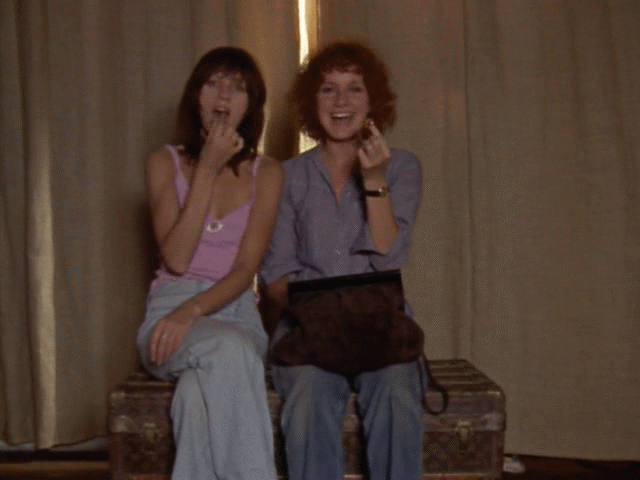
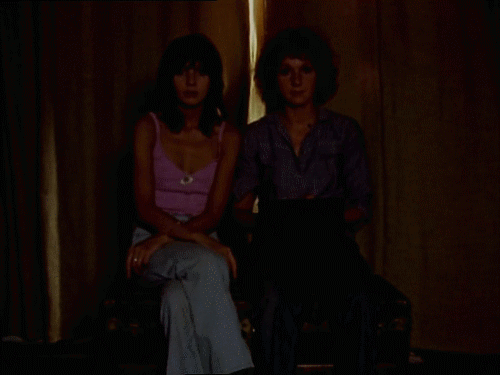
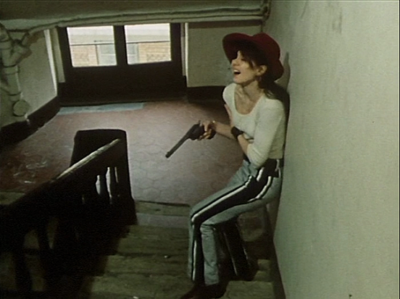

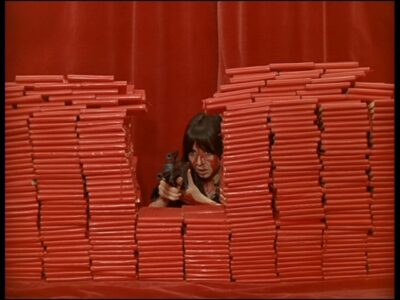
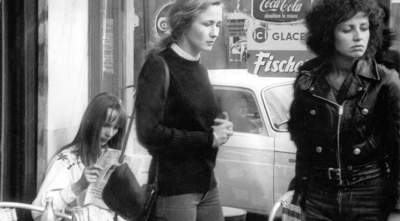
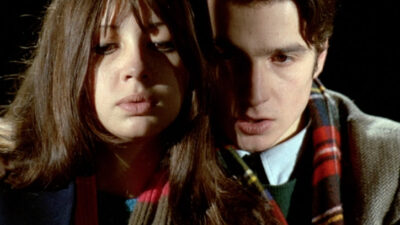
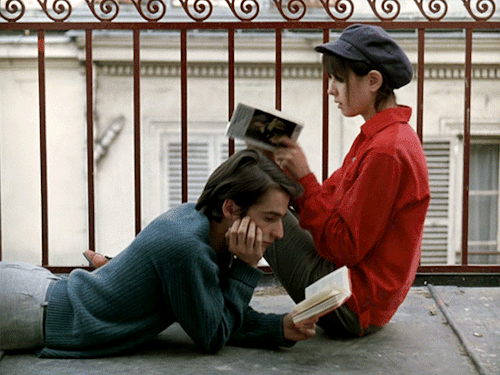

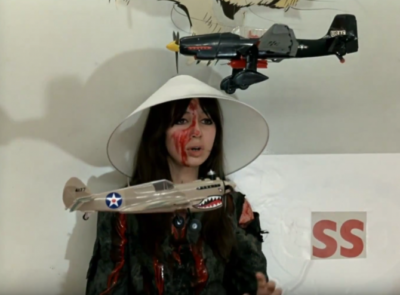
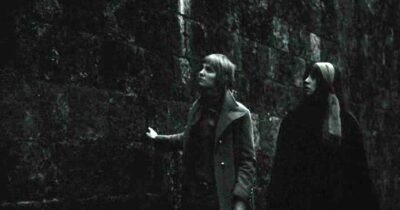
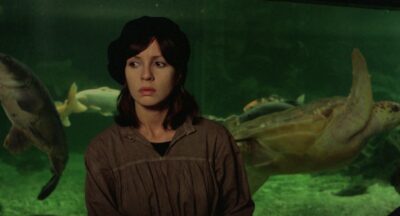
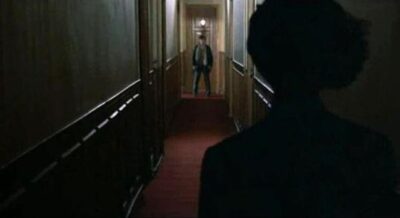
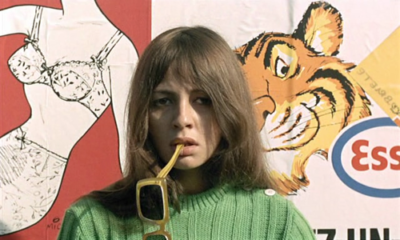
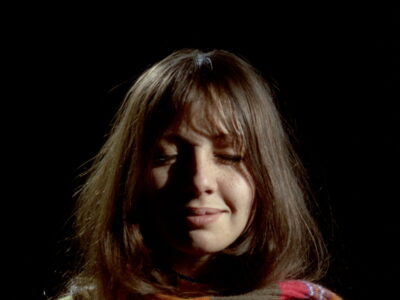



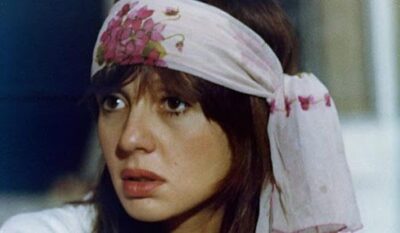
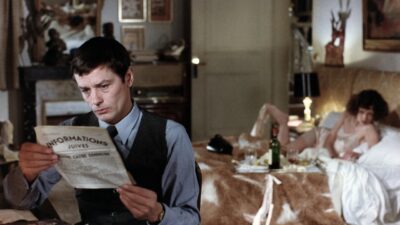
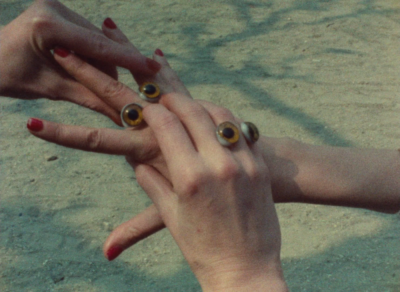
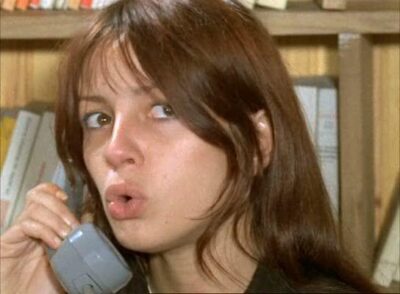
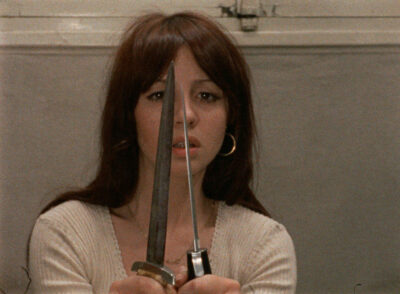
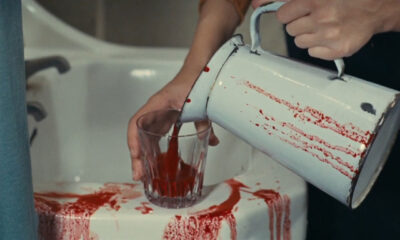
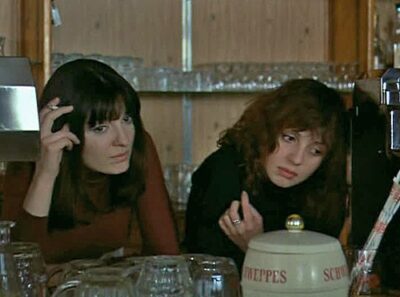
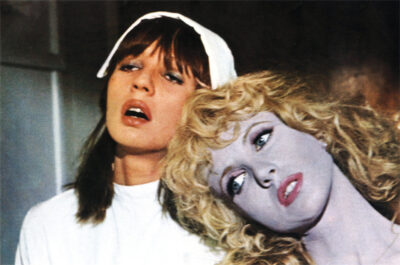
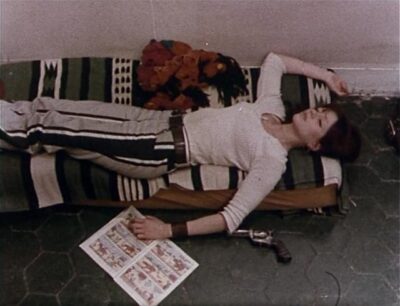
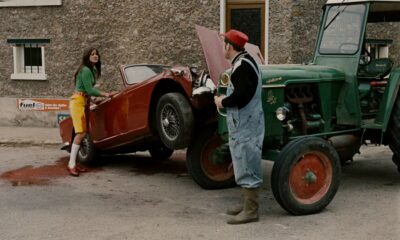
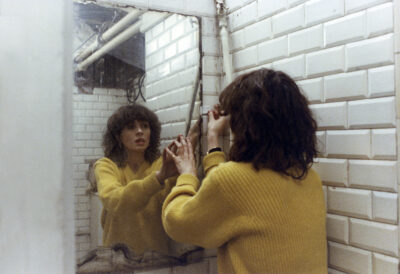
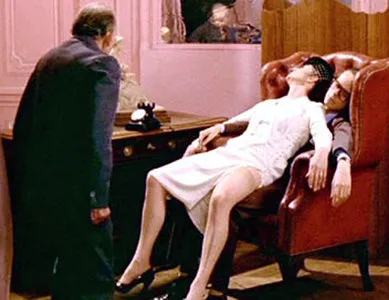
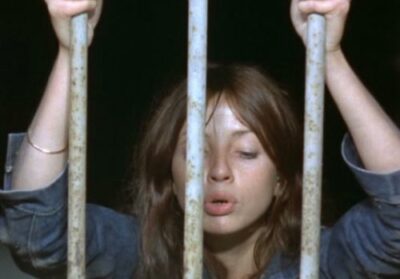

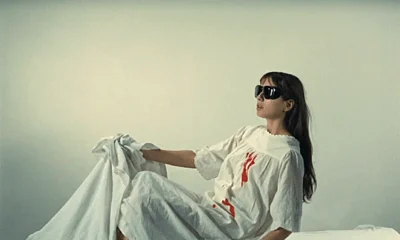
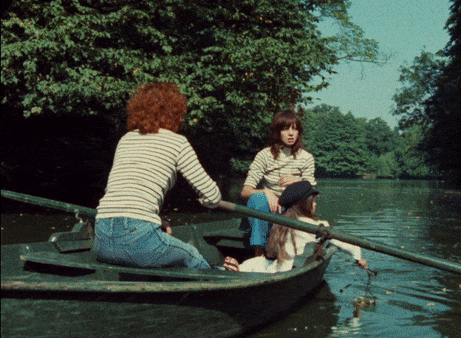
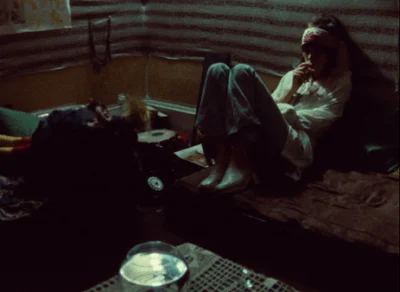
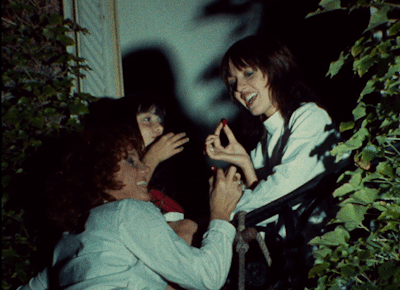
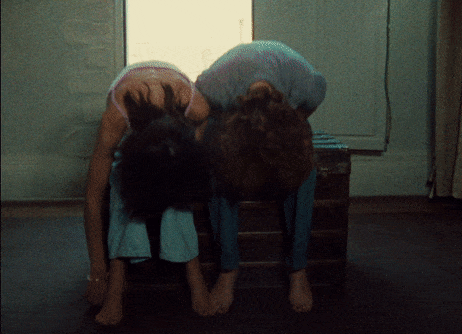
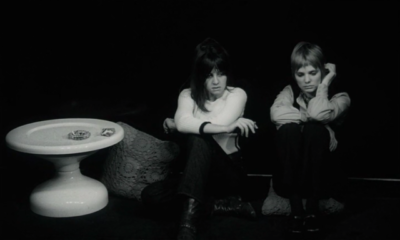
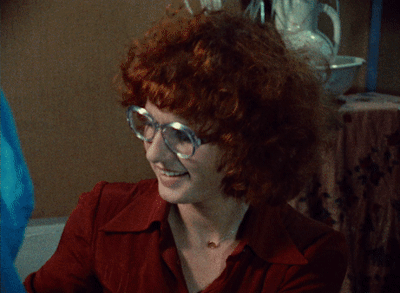
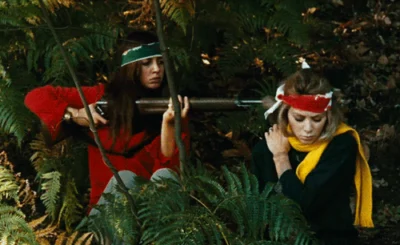

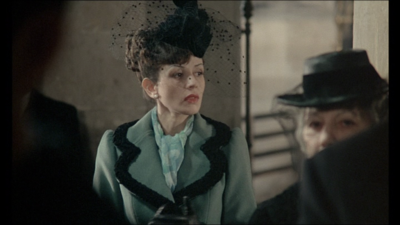
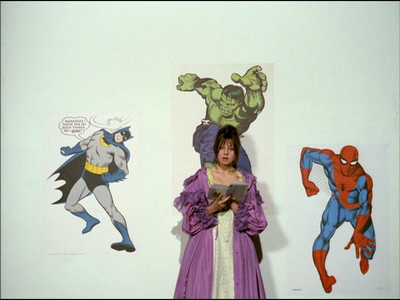
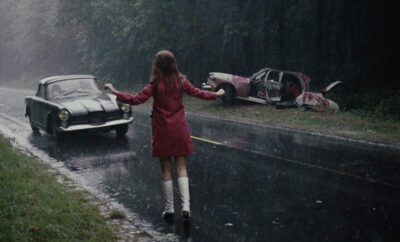




 Now available in North America
Now available in North America 
Hi!!
Yeah, my high school PE teacher was a real prick, generally getting off on humiliating her students, so I think some extreme stairlifting is well deserved.
Thank you, love! Pancakes are one of the best things in the world, so… this is quite a nice fate for our planet. Love planning to write his dissertation on the psychology of procrastination but being unable to just sit down and start it, Od.
Thanks…
and ref: ‘B. power station’ I’m curious to have a look inside when it officially opens….
It’s nearly the end of January so that’s two months till Spring! I’m looking forward to that!
I like the first gif image of the blood coming from behind the glasses as it was unexpected…
Did you see the new Matrix film… I’m gonna wait till it comes out online…. and buy it on google play store or sky….
x
just uploaded an old poem to my facebook, I’ll spare you as it’s about a mile long… I wrote it over 10 years ago or there abouts… it’s based on me when I was 15 with bleached to fuk hair, I take up with christ and go walk about…. stating out at the church youth club I used to go to… it was in part influenced by you…. that’s why I’m mentioning it… I do such things as scratch Galileo on my chest… there is a counterpart poem where I meet up with satan equally as long… and I have a great time with him as well… those things have sort of been done already… but when you put yourself in the picture it becomes original… like if you were to screw christ Dennis in a story it would instantly be unique… you may have already done that??? knowing you….
Wonderful to see this tribute to uliet Berto. There are a lot of gret film actresses:Meryl Streep, Maria Casares, Ingrid Bergman, Shirley Maclaine, Annette , Anna Karina, Giuelietta Masina, Anjelica Huston. . Juiert berto is a lot more than that.She is a cinematic forse. Godard discovered her, but it was Rivette who made her artistry possible in such masterpieces as “Ou One,” “Duelle” and above all “Celine and Julie Go Boating.”
If you go toe “The Magic Castle” then you’re likely to meet up with Neil Patrick Harris who is on its board of directors.
CORRECTION: Annette Benning, Bulle Ogier
Celine and Julie Go Boating has been on my DVD wishlist forever but I’ve always been put off by its length. It will happen though.
I really enjoyed your Ryan Trecartin interview just now. When you guys were chatting about making films I remembered that Rachel Maclean has created this epic permanent commission for Jupiter Artland. It’s just outside Edinburgh and I’d like to visit that someday soon, whenever it may be.
Hey Dennis – Great post! I’ve been thinking about Juliet Berto lately. I read somewhere her debut film was restored and re-released in France. Have you seen it yet?
I knew Berto worked with a number of great directors, but I didn’t realize it was this many. The Robert Kramer film “Guns” looks great. I believe Re:Voir recently made that available? And I had no idea she was in that Serge Bard movie. Have you seen it? Always been curious about it.
Excited about the short fiction collection starting to take shape. For me, it’s always a good feeling when I can give a fresh life to strong pieces that didn’t fit in a novel.
I just saw the interview with Ryan Trecartin was posted – going to check that out shortly. Is it the full version?
NEIGE played New York recently, but I was not able to go. Her brief spell as a director seems to getting attention at last.
Did your PE teacher also teach health class? Mine did, and it’s weirdly common in American schools. You can always trust a jock in his 40s to handle sensitive subjects about sex and drugs.
I’m rather anxious about tomorrow’s doctor’s visit. The first trip to see a new doctor feels really awkward, and I’m not looking forward to his inevitable remarks about my weight. (if I knew how I can lose it and keep it off successfully, I would’ve done so by this point in my life.)
On a much brighter note, my podcast conversation with my friend Nick DeMatteo went up a few days ago: https://www.youtube.com/watch?v=mmEK8NC_S8c&ab_channel=NickDeMatteo.